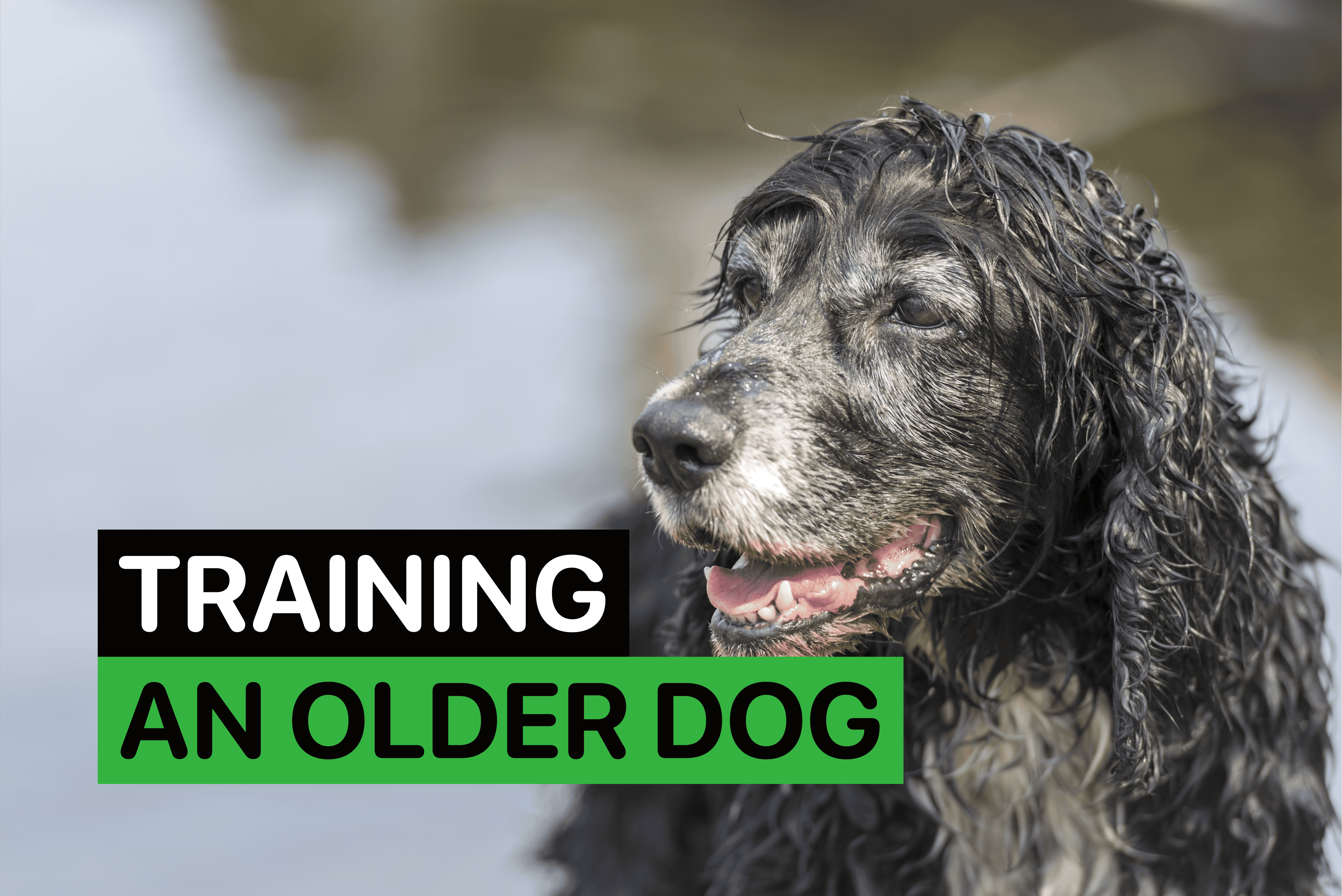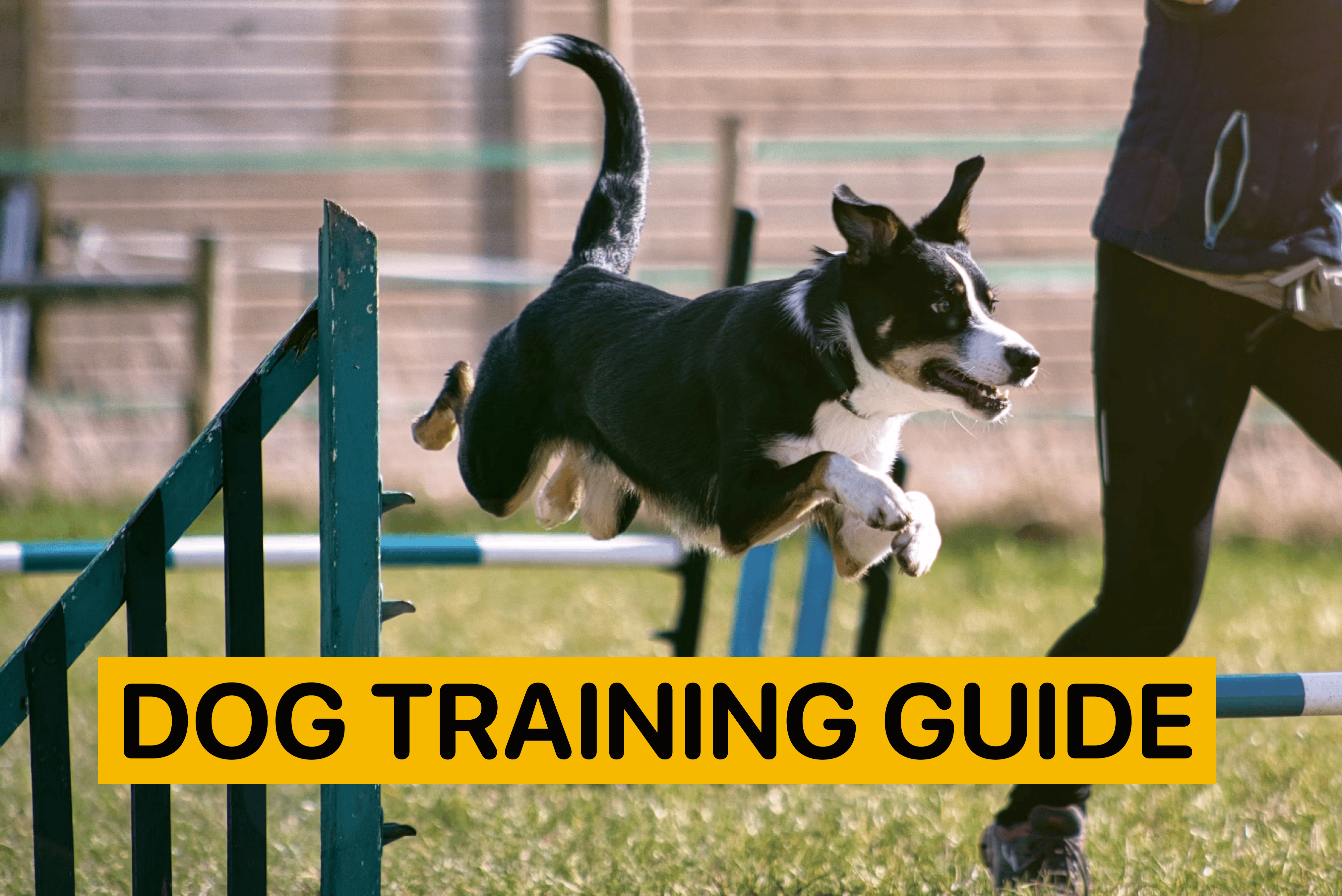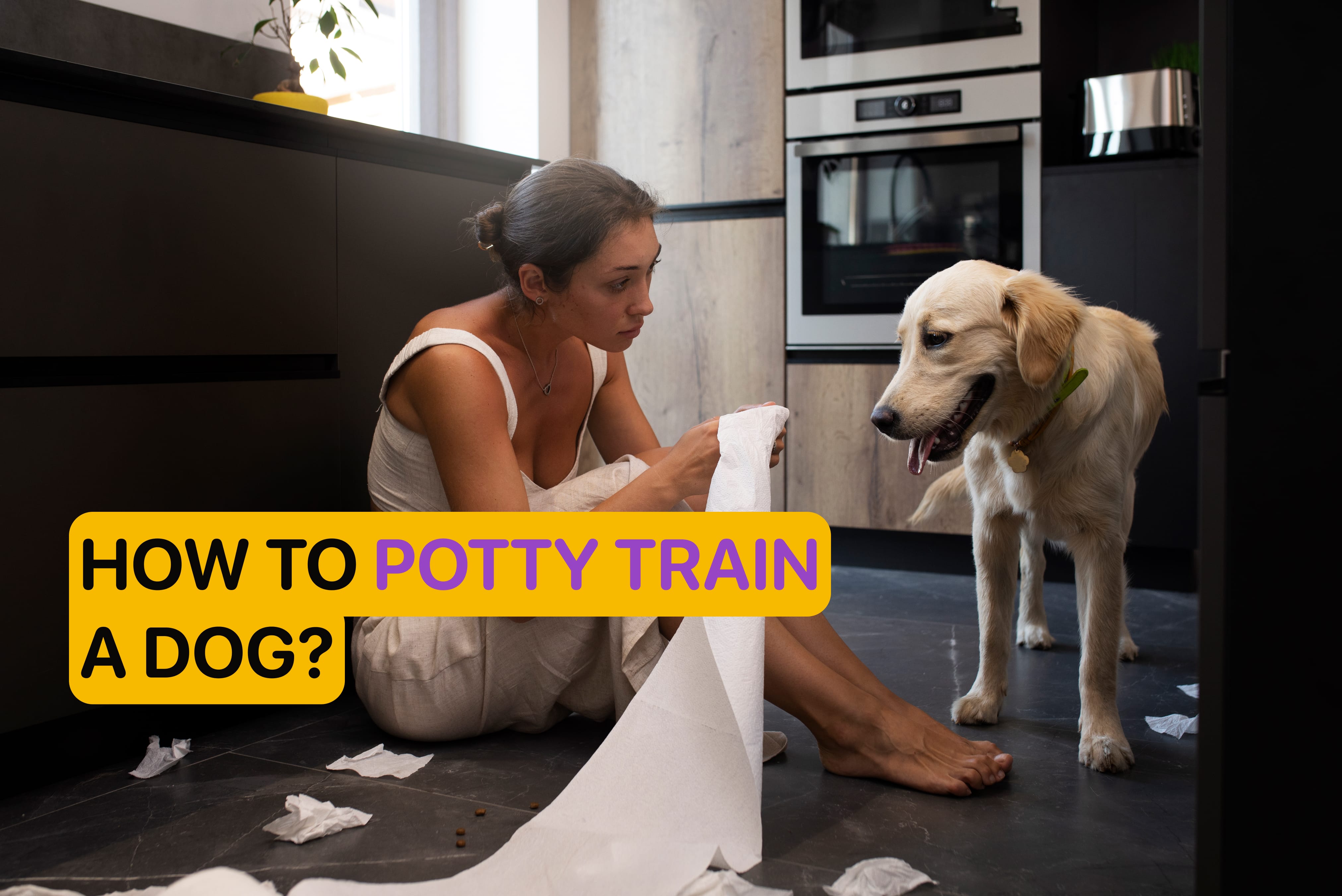How to House Train and Re Potty Train an Older Dog

By
Anastasiia Petrovska Updated on |Reviewed by Shannon Kenny
When you think of potty training, you might believe it’s puppy-only training. However, many adult dogs, especially those adopted from shelters, still need to learn some basic rules, too. House training an adult dog might seem like a challenge. You may not know where to start or whether your pet has been properly trained in the past. But don’t worry, you’re not alone! Our expert team has prepared a short guide with multiple valuable tips, which will help you form a regular routine for your pet.
Key Takeaways
- Make sure there are no medical issues behind the potty problems
- Older dogs can be successfully re-trained with proper guidance from their owners
- Positive reinforcement is superior to punishment
- Maintaining routines and reducing stress are crucial when house training an older dog.
Reasons for Potty Training Older Dogs
House training isn’t just for puppies. It’s way more common than you think. There are several reasons why older dogs may need to learn some rules:
- There were gaps in previous training – this is common for recently adopted pets or after rehoming
- Your canine friend seems to have lost their previously learned skills
- You’ve got a rescue dog – there may not be any information about the owner, vaccinations, or prior training
- There were significant changes in the dog's environment or routine
- Medical issues – it can be necessary when the dog has certain medical problems. Repeat house training may be needed in the recovery period after any surgeries.
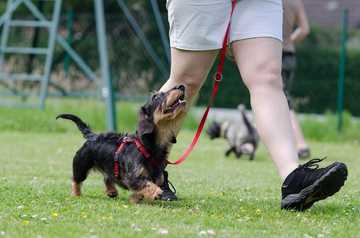
Another potential reason behind potty problems can be loss of bladder control after the dog was spayed. Scientists from the Royal Veterinary University College of London state that neutered female dogs have a 3 times higher chance of developing urinary incontinence.
Bodyweight and breed also increase the likelihood of urinary problems after being spayed. So, make sure to check if potty-related issues are not the result of being neutered before re-house training a dog again.
How to House Train an Adult Dog
House training an older dog starts with this simple understanding: dogs of any age can learn where to go and what to do. According to the dog trainer, “Structured routine, guidance, and time are the key secrets to your success." Check out our six steps on how to potty train an older dog.
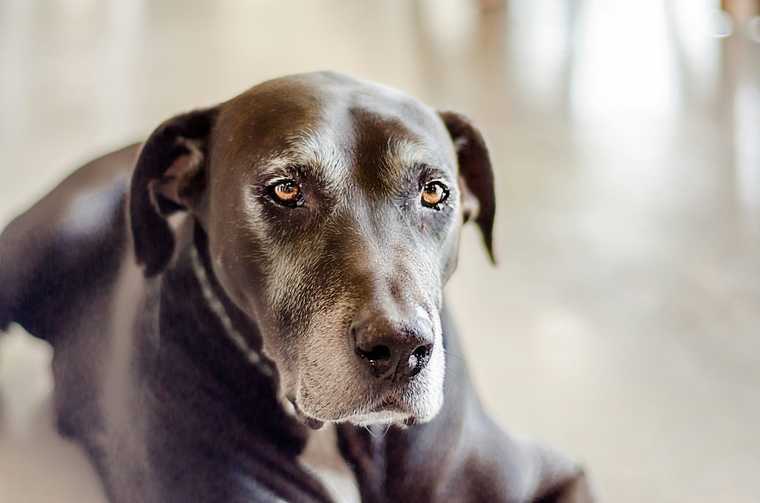
1. Feed on a schedule
Dogs usually need to relieve themselves 10–30 minutes after eating. Feeding routine sets the rhythm. When you feed your pet at the same time every day, you can predict potty time more accurately.
2. Designate a potty spot
Potty training an older dog becomes easier when you remember that dogs are creatures of habit. Find a spot outdoors as well as indoors and use it on a day-to-day basis. Dogs are more likely to use the bathroom in places they have gone before since they can smell it.
3. Regular potty breaks
Guide your dog to the designated potty spot at home. Make sure to do that before you go outside, so that your pet is getting used to it. As a rule, an average adult dog needs walks outside around 4–6 times per day, depending on their size and activity level. Regular potty breaks are essential when housebreaking an adult dog.
4. Recognize signs
Catching the signs on time is one of the most challenging tasks. Here are the cues you need to watch for:
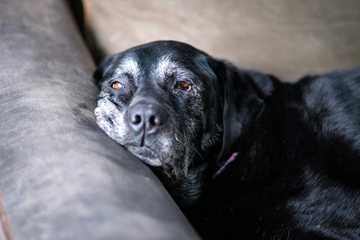
- Restlessness
- Circling
- Sniffing the floor
- Pacing
- Heading towards the door
- Abruptly stopping any activity that they were focused on
- Whining.
As soon as you spot these patterns of behavior, take your dog to the designated area.
5. Use a cue word
Cue words help the dog associate the command with the expected action. Whenever your pet relieves themselves in the designated spot, give the cue. Your canine friend may learn this word and connect it to what you expect them to do.
6. Avoid punishing mistakes
Accidents happen all the time. Avoid shouting or punishing your dog for peeing indoors – this only causes confusion and fear. Dogs don’t understand what punishment is. Especially if it happens right after the “accident.”
Instead of punishment, do this:
- Clean using an enzyme cleaner
- Guide your pet to the right potty spot
- Reward them.
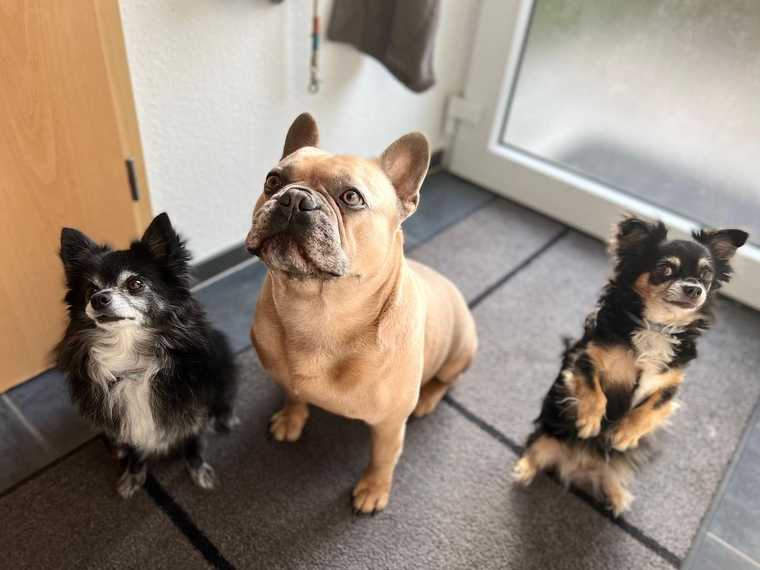
How to Re-Potty Train a Dog
Sometimes, old habits like peeing in the house slip back. Even a well-trained dog can have these problems, either due to a new schedule or because their family has just moved. Regardless of the cause, the steps on how to re-house train a dog are similar to the ones from the very first potty training.
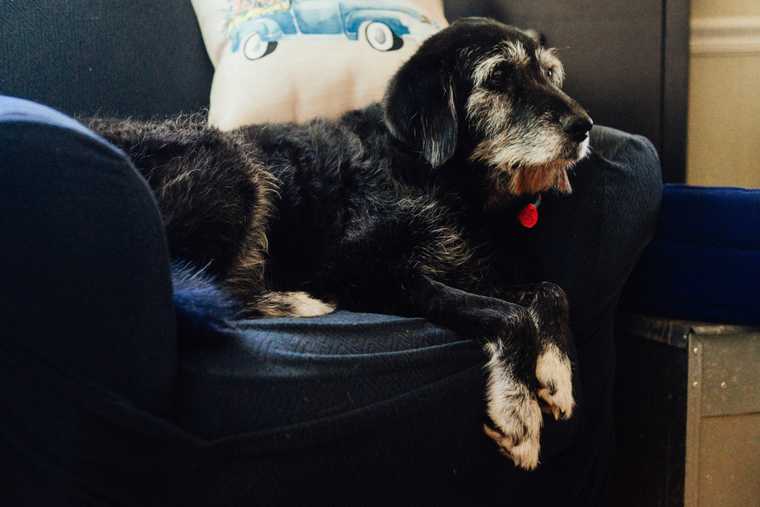
1. Identify the cause of regression
Identifying the underlying cause is the first thing you need to do before starting training. Stress, medical problems such as a UTI (urinary tract infection), or incontinence should be ruled out first.
2. Reestablish routine
Daily routine is the most powerful tool if you’re wondering how to retrain a dog to stop peeing in the house. Basic things – scheduled walking time and regular meals – can make a big difference. Use the same cue words and specific potty spot. Familiarity brings comfort to your dog.
3. Supervise closely
Supervision and guidance are a must for re-house training a dog. When you can’t watch, make sure there is a gated area for your canine friend. If you’re not sure you can manage potty problems, supervision and guidance are the safety belt.
4. Reduce stress
Stress is one of the most underrated yet frequent causes of regression. A few things that can stress your dog out:
- Moving into a new apartment
- Meeting too many people
- Places that are too loud.
These are a few things that can distress a dog. Make relaxation a part of a dog's training routine. Create a calm environment that makes potty training an older dog easier for both the owner and the dog.
5. Track patterns
Keeping a diary for about a week – when your dog drinks, eats, or even relieves themselves – can offer a lot of valuable information. You could notice patterns: some potty accidents happen after long naps, new people in the house, or even late meals. Once you identify that, adjust your schedule accordingly.
Discover the smarter way to track your bestie’s health and routine. From nutrition and hydration to daily activity – everything in one app. Calculate your dog’s wellness score now!
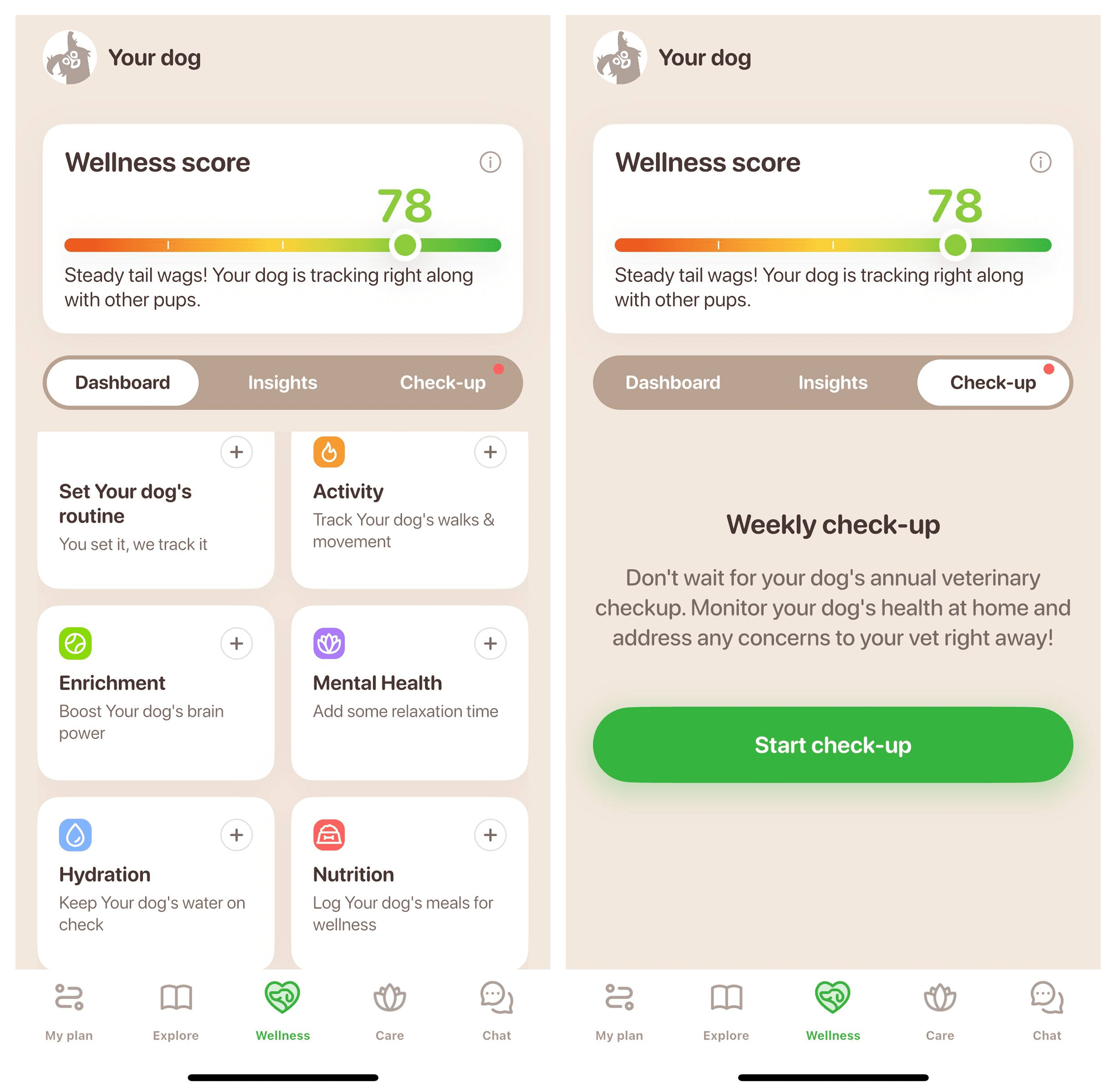
6. Positive reinforcement
When you’re learning how to housebreak an older dog, remember: praise is one of the most effective techniques. As soon as your canine friend relieves in the correct spot, give them a small treat or verbal encouragement. Regular positive reinforcement enhances learning and strengthens your bond.
Wrap Up
House training an older dog isn’t just about discipline – it’s about communication. Older dogs are more focused and eager to please, though they might need a little bit more time and patience to unlearn old habits. Regardless of whether you’re dealing with regression or just housebreaking an adult dog, remember the key principles.
A regular routine, a sense of comfort, and the familiarity you create through cue words, as well as the reassurance you bring, with the help of positive reinforcement, will give you steady success.
